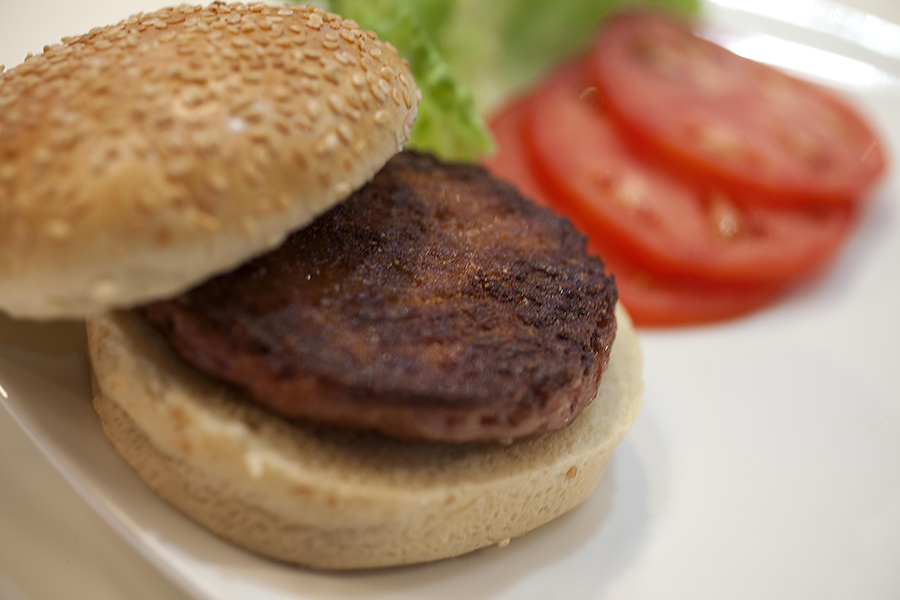Roger Highfield, Director of External Affairs at the Science Museum Group, writes about the world’s first lab-grown or ‘in vitro’ hamburger. Would you eat the burger?
The world’s first lab-grown or ‘in vitro’ hamburger was cooked and eaten today at a press conference in London for a demonstration project to show the future of food, funded by Google’s Sergey Brin.
The cultured cell burger, estimated to be worth around £220,000, was created by Prof Mark Post of Maastrict University in a project that took him two years.

The burger was cooked in butter by chef Richard McGowan before an audience of journalists, then subject to a taste test by US-based food author Josh Schonwald and Austrian food researcher Hanni Ruetzler.
The verdict? Close to meat, though more like ‘animal protein cake’, said Schonwald. All commented that it lacked fat, salt and pepper.

You can follow the press conference on Storify, watch a video here and read reports by the BBC, Daily Telegraph, New York Times and Popular Science.
The event heralded a ‘Brave Moo World’ according to Channel 4.
To create the hamburger, muscle cells taken from the shoulder muscle of a cow and multiplied to form muscle tissue, the main component of beef.
The cells arranged themselves into tiny ‘myotubes’ which are grown around gel hubs, attached to Velcro ‘anchor points’ in a culture dish. Electrical stimulation was then used to make the muscle strips contract and ‘bulk up’.
With this technique, a single strand can produce over a trillion new strands. And when all these tiny pieces are added together, tissue is the result; it took 20,000 of these small strands of meat to create one normal sized hamburger.
Other ingredients include salt, egg powder, and breadcrumbs. Beetroot juice and saffron were added to provide authentic beef colouring.
One reason Brin is backing this project is that the Food and Agriculture Organization of the United Nations estimates that the demand for meat is going to increase by more than two-thirds in the next four decades and current production methods are not sustainable.
Livestock also contributes to global warming through releases of methane, a greenhouse gas 20 times more potent than carbon dioxide, via belching and farting.
According to Prof Post, research carried out at the University of Oxford suggests that producing cultured, or in vitro, beef could use as much as 99% less space than current livestock farming methods and will have smaller emissions.
2 comments on “Cultured Beef”
Comments are closed.
Food for thought
I think this is quite a remarkable achievement. Although people may be put off at first, it is probably preferable to some of the junk currently used to produce burgers! This is an excellent solution to the issue of sustainability and it would be interesting to see if there are other foods that can be reproduced in a similar way. Is this a cost effective solution?